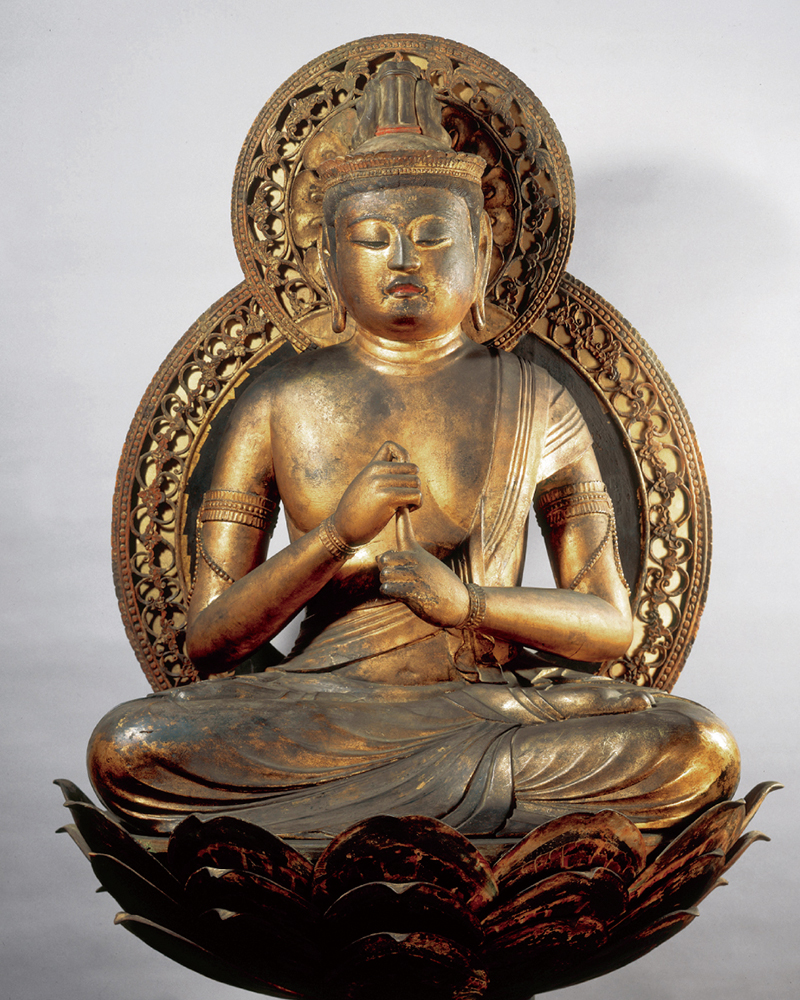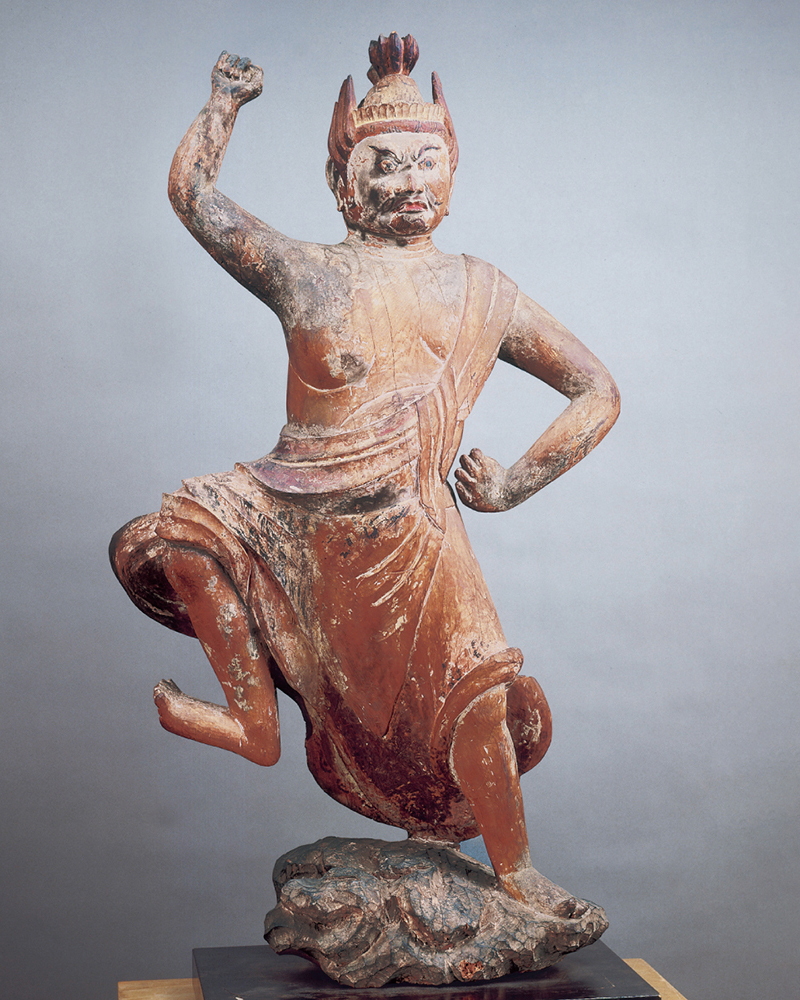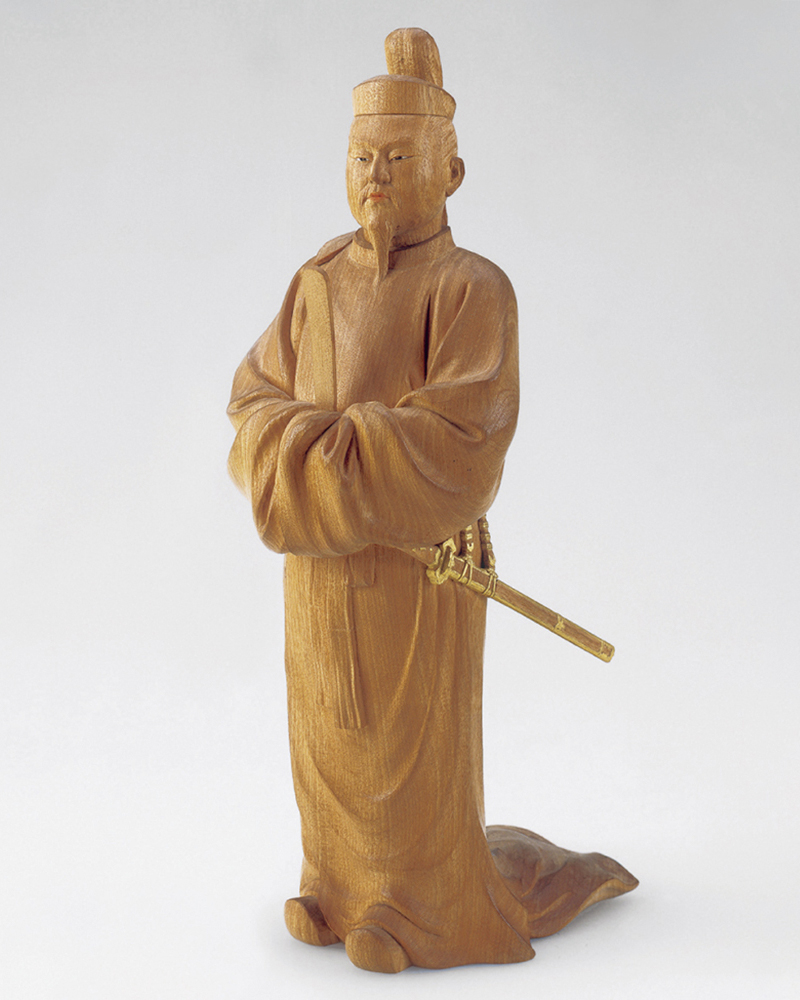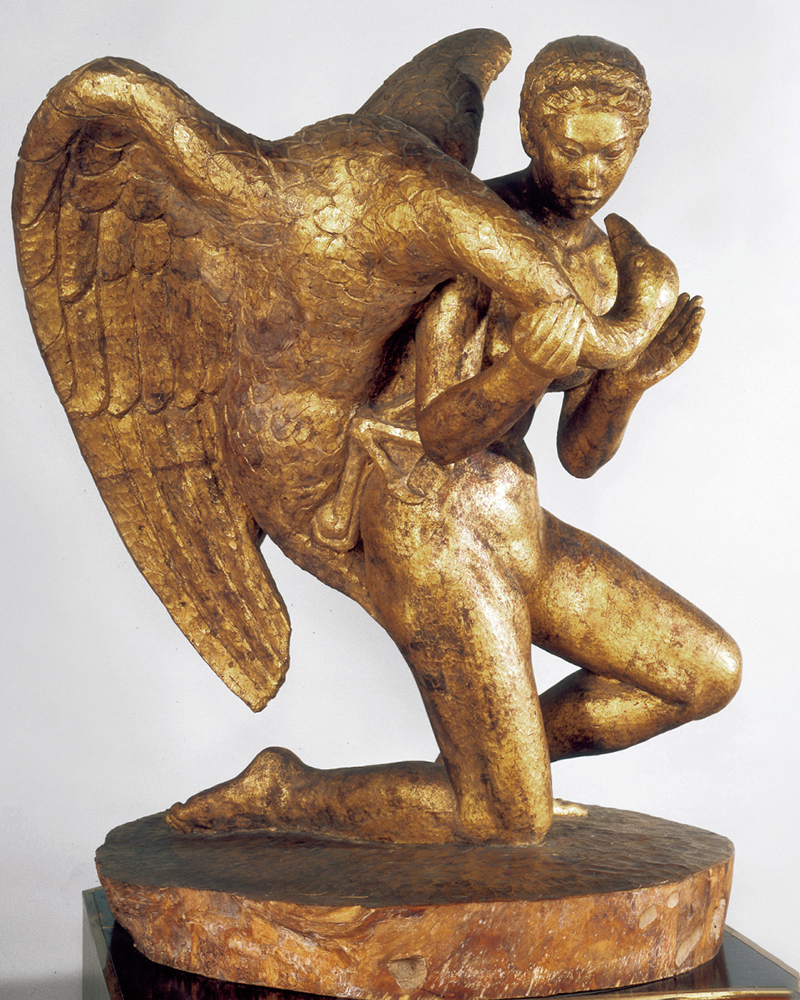Seated Vairocana
(Dainichi Nyoraizazo)

Specific information
Important Cultural Property
Country
Japan
Era
Heian period (12th century)
Traits
Wooden lacquer and foil
Number of members
1 body
Law
height 92.2 cm
Commentary
In esoteric Buddhism, Dainichi Nyorai is a Buddha who is considered to be at the centre of the world. There are two ways of expressing this world: the "Vajrayana Realm," which shows the overall system, and the "Tanzang Realm," which shows the roles of the Buddhas that make it up, and the form of the Buddha varies slightly in each case. This statue is Dainichi Nyorai of the Vajrayana Realm, with his left index finger in the right hand in the wisdom fist mudra. With half-closed eyes, a calm expression and a rounded, well-proportioned body, this style of Buddhist statue is known as the "Jocho style," and was popular in the capital during the Heian period. This statue was located at Kawai-dera Temple in Kawachinagano City, Osaka Prefecture, which shows that the trend in the capital had spread to the surrounding areas as well.









